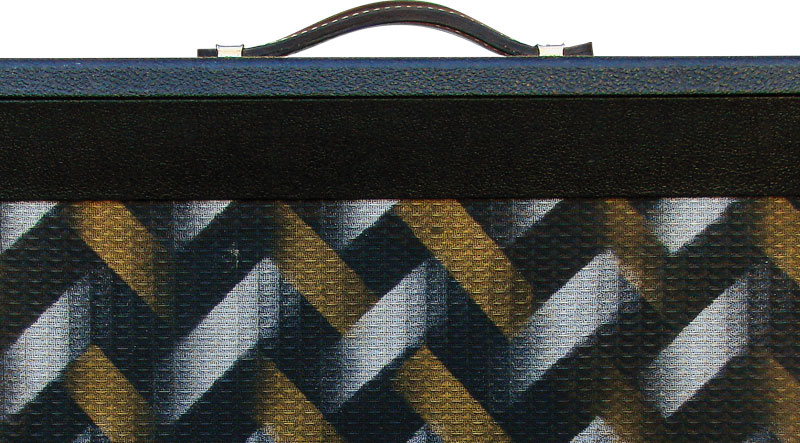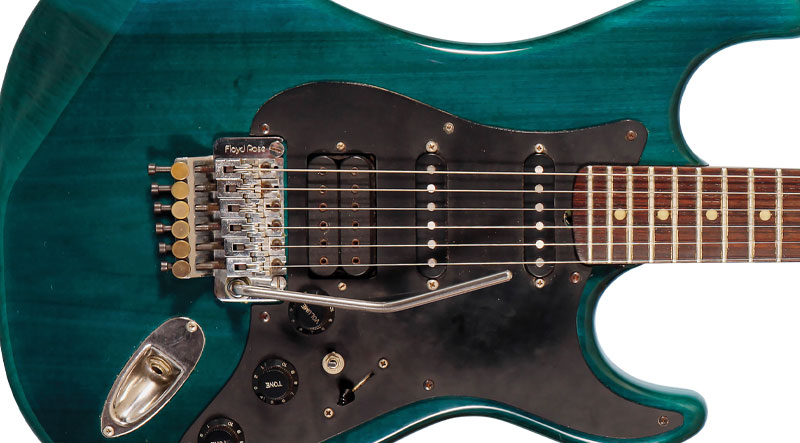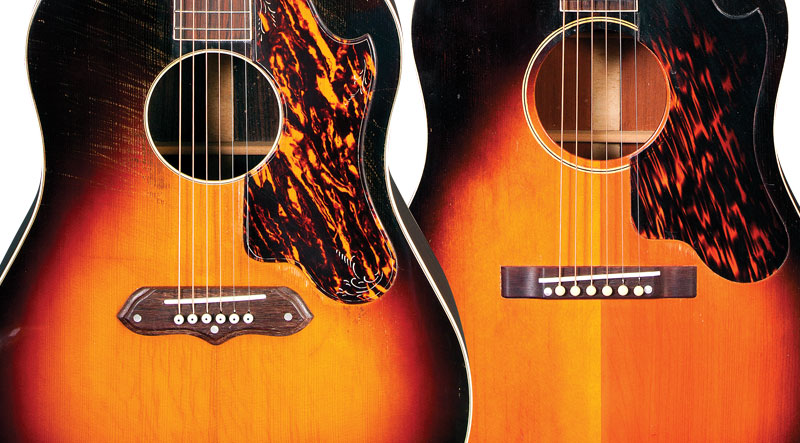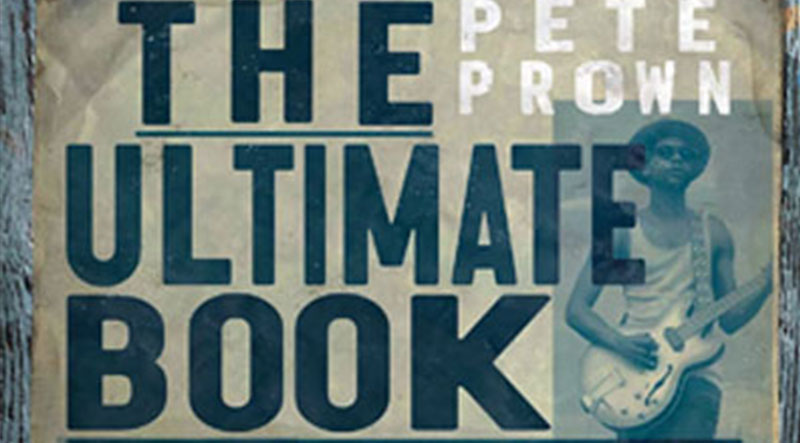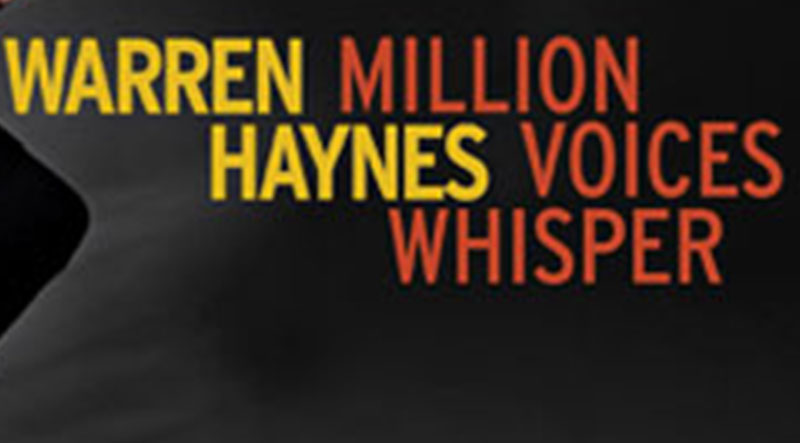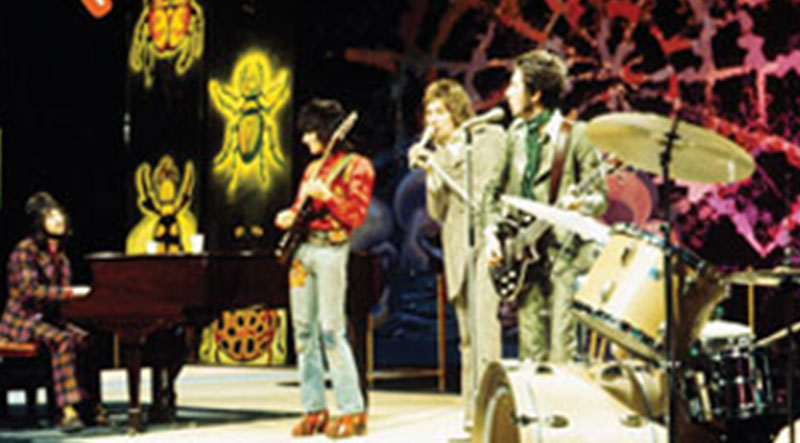
• Preamp tubes: three 12AX7
• Output tubes: two 6V6GT, cathode-biased
• Rectifier: 5Y3
• Controls: Volume for each channel, shared Tone, Tremolo Rate and Depth
• Speaker: Jensen Special Design P12R
• Output: approximately 20 watts RMS
The “club amp” has been a perpetual best-seller since the dawn of guitar amplification, and several big-name ’60s models are among the all-time classics. But what if you’re looking for a different sound? Let’s check out five fantastic small combos with nary a Fender, Gibson, Marshall, or Vox in sight.
Many tube amps of the 1940s and early ’50s were club amps by default, given the technology, and required some evolving before they could deliver much above 20 watts of output. The category came into its own in the ’60s, when myriad makers offered portable and great-sounding combos as “little siblings” to the big-stage amps that were king of the hill amid the volume wars. We might loosely define the genre as 1×10″ or 1×12″ combos – maybe a 2×10″ at most – driven by a pair of lower-wattage output tubes, often with tremolo and/or reverb built in. In other words, the ultimate “grab and go” amp for venues of 120 people or less, where the amp and room cooperate to hit that tonal sweet spot that won’t blow the doors off the club but can still keep up with a moderately dynamic drummer.
Most players perusing that definition will think “Fender Princeton Reverb or Deluxe Reverb,” and they certainly qualify, as do the fabled Vox AC15 and Marshall 18-watt models. But let’s indulge an opportunity to stray from the obvious and examine five less-appreciated ’60s combos that offer great service in a club setting.
Ask “What’s the best-sounding vintage 15-watt amp ever made?” and chances are that not many guitarists will reply, “The Martin 112T, of course!” But the enthusiasm of those who do ought to tell you something – and just because they aren’t the most common choice doesn’t mean they’re not the right choice.
This 1961 Martin 112T was manufactured in Toledo, Ohio, by Rowe Industries (the same company that made DeArmond pickups and effects) and was simply a repackaged version of the DeArmond R15T introduced the year before. If you investigate Martin’s foray into electric guitars in ’61, you’ll find DeArmond Model 200 pickups on the F Series thinline hollowbody electrics, making the OEM company’s new amp line a natural to co-opt as a partner for the full Martin electric set. Neither lasted long, which might partly be because the amps – as great as they sounded – were entering a new era looking more like something from the era that had just passed, as perhaps did the guitars.

• Preamp tubes: three 12AX7
• Output tubes: two 6V6GT
• Rectifier: 5Y3
• Controls: Volume 1, Volume 2, Depth, Speed, Bass-Treble Tone
• Output: approximately 12 watts RMS
• Speaker: Jensen P12Q
Compare the schematic from a late-’50s 5E3 Deluxe to that of the 112T and you’ll find the circuits extremely similar (the absence of tremolo in the Fender notwithstanding) other than a few subtle twists. But oh, what a difference those twists make. The use of a hotter 12AX7 (vs the 12AY7) in the first gain stage, tighter and brighter coupling caps, and heftier filtering in the power stages partnered by heftier power and output transformers all conspire to make the 112T a bold, stout, punchy sounding 1×12″ – and the fact that so many players are now hip to this fact means they’re quite pricey on the vintage market, despite being “alternatives.”
Even fans of the ’60s Rickenbacker guitars that George Harrison and John Lennon, Pete Townshend, Roger McGuinn, Paul Weller, Peter Buck, and others plugged into their Vox, Fender, Marshall, and Hiwatt amps are likely to gasp, “What? They made amps, too?” Sure did, though in far fewer numbers than the guitars that boomed amid Beatlemania.
The Ric amp most likely to come to mind of a vintage-gear enthusiast is the hulking solid-state Transonic model of the late ’60s, used on U.S. tours by Led Zeppelin, Jeff Beck, Steppenwolf, and others. When dawn of guitar amplification, however, the existence of this tasty ’60s combo should seem less unexpected. In fact, Rickenbacker had its roots in pre-amplification efforts to make the guitar louder via the National Resophonic Guitars of the ’20s, and key personnel from that venture morphed the acoustic-based approach into an electrified one with the release of the first Ric electric guitars and amps of the early ’30s.
For all this, the first thing you notice about the Rickenbacker B14A combo is… hey, it’s silver! Ricaficionados will recognize the shiny Tolex used on some guitar cases in the ’60s, but it makes an even brighter impression wrapped around an amplifier. Inside, things are a little more pedestrian.
The flashy cab houses what would have been a traditional top-mounted chassis just a few years before, but would have seemed outdated by the time this amp was introduced in ’64. The circuit and construction are a blend of Fender, Gibson, and Valco archetypes, with the rugged eyelet circuit board nodding toward the former and the plethora of smaller ceramic-disc coupling capacitors toward the latter. The engine room generates roughly 12 watts from a pair of cathode-biased 6V6GTs, with a 5Y3 rectifier and three 12AX7s at the front, enabling two channels with a shared Tone control plus Speed and Depth for the tremolo (“Tremlo” on the faceplate).

• Preamp tubes: three GE 12AX7
• Output tubes: two GE 6973, cathode-biased
• Rectifier: 5Y3
• Controls: Volume, Tone, Tremolo (speed, with on/off switch on pot and footswitch out).
• Speaker: Jensen Special Design C10R
• Output: approximately 17 watts RMS
In use, the B14A might lack the compelling tweed-era grind of its earlier Fender counterparts, but exudes an appealingly toothsome clean sound with a hypnotic tremolo, all aided by an Alnico-magnet Jensen P12Q.
While Gre-tsch was one of the great originals of electric-guitar manufacturing during the rock-and-roll boom of the ’50s and early ’60s, the company never manufactured its own amplifiers. Instead, this Gretsch 6156 Playboy model and its siblings were made by Chicago-based Valco, which also manufactured amps for National, Supro, Airline, and others. In fact, the models available from any of the third-party brands (and Valco’s own house brands) at any era carried largely the same circuits and chassis with cosmetic alterations to suit the company’s varying styles – and with that in mind, it’s hard to argue against Gretsch as one of the coolest re-badgers of Valco products.
If the “Playboy” moniker given the Model 6156 doesn’t quite stand the test of time, it certainly suited a swinging club-sized combo of the early ’60s, and graces a surprisingly fierce tone machine despite its diminutive proportions. Even smaller than the ’60s Princeton it was likely intended to rival, it nonetheless brings as much or more power and volume, along with a stout and original voice to boot.
Rather than the tall, narrow EL84 tubes they appear to be, the 6156 Play boy carries a pair of 6973 tubes, cathode-biased with no negative feedback, in largely the same circuit as the highly desirable Supro Model 24 and others of the era. Those tubes are a little thicker, meatier, and grittier-sounding than EL84s, but still with plenty of sparkle and surprisingly good low-end (through a bigger cab, at least).
As used in this design, they offer a furious roar when cranked up, but without the fart-out compression you’d expect from a little combo. What’s more, they put out a genuine and robust 17 watts at full bore, which is more than an old Jensen C10R is going to want to see for very long. Unlike many Valco-made amps with similar circuits, however, the Gretsch employs a cathodyne (split-phase) inverter rather than an archaic paraphase inverter, which contributes to a bolder clean tone and throatier, less mushed-out overdrive. Add its throbbing bias-modulated tremolo, and it’s one ferocious beastie of a compact club combo.

• Preamp tubes: four 12AX7, one 6EU7, one 12AT7, one EL90
• Output tubes: two 6V6GT, cathode-biased
• Rectifier: 5Y3
• Controls: volume, bass, treble, reverb for each channel; tremolo speed and intensity
• Speaker: Jensen C12RL 12″ (original)
• Output: 15 watts RMS
It might be the multi-colored control knobs that jump out at first glance, but the 1962 Premier 120R combo – “With Reverberation and Tremolo” (thank you very much) is unique in many ways. A year or more before even the earliest Fender Princeton Reverb and Deluxe Reverb models hit the scene, the 120R was offering both reverb and tremolo on each of its two channels, which also carried independent Treble and Bass controls.
Premier amplifiers were manufactured in New York City by the Multivox Corporation of America for East Coast distributor Sorkin Music Company, and arrived early enough to rival Fender’s first serious efforts of the late ’40s. The 120R is closer to the size of a late-’50s tweed Deluxe – about an inch taller and quarter-inch wider – and is laid out much the same. Channel Two, in addition to its “High” input, has something labeled “Two Chan Input.” While we might assume this jumpers the two channels (as players will do with 5E3 Deluxes or many early Marshalls to achieve a beefier overall sound), it actually constitutes a stereo (tip-ring-sleeve) jack to receive input from one of the many stereo guitars that were popular at the time, and feeds the signal from each of those two pickups to its own individual channel… from whence it does not proceed in stereo, since it all ends up through the same mono output stage and single 12″ speaker. Still, it’s a thoughtful inclusion, and one redolent of an era when manufacturers – for a brief time, at least – must have figured everything had to have a stereo feature.
As with most Premier amps, none of the circuit stages are quite like anything seen in the rivals of the day, though they’re also not particularly outlandish or complicated. Gain stages are provided by 12AX7 preamp tubes, with just one stage in Channel Two, but two in Channel One. The bonus triode makes Channel One a little hotter, and helps its signal better survive the insertion loss of having Bass and Treble potentiometers in-line, which follow after both gain stages, with the channel’s Volume control last in line behind them before it all heads off toward the tremolo circuit. Output is a modest 15 watts from a pair of cathode-biased 6V6GTs, with a 5Y3 tube rectifier in the power stage – all of which comes together in an unusual combo with a rich, compelling voice both clean and overdriven.
Finally, our 1962 R-12-R Reverberocket makes the alternative-club-classics cut precisely because it’s not a typical Ampeg, or at least not of the archetype envisioned by the company’s founder and president, Everett Hull. According to the late tube-amp guru Ken Fischer (1945-2006), who worked as an Ampeg engineer long before founding Trainwreck Circuits, Hull felt “rock and roll doesn’t swing – it never will.” What did swing for Hull? Jazz, of course, so the company president – himself a piano and bass player – much preferred to cast his sonic pearls before the princes of the jazz world, and not the swine of rock and roll. As such, Ampeg amps of the ’50s and ’60s were bold, clean, clear, and rich, but they didn’t grind, bite, or sting unless you really pushed them past their optimal parameters. There was one amp, however – and again, this is a Fischer-certified tip – that fell through the cracks – the early-’60s R-12-R Reverberocket.
Part of the key to this Reverberocket’s rockability is its pair of 6V6GT output tubes. The amp went through several iterations from the late ’50s into the ’70s, and many were made with output tubes that just didn’t break up much. We already know, though, that 6V6s give up the goods in plenty of other amps, and the rest of the Reverberocket of this era seemed predisposed to go along with it.

• Preamp tubes: two 6SL7, two 6SN7
• Output tubes: two 6V6, cathode-biased
• Rectifier: 5Y3
• Controls: volume, tone, dimension (reverb), speed and intensity (tremolo)
• Speaker: Jensen Special Design C12R
• Output: approximately 18 watts RMS
“That was Everett Hull’s one effort to make an amp a little more Fendery,” Fischer revealed in an interview shortly before his death, and while it might have helped an Ampeg finally appeal to a younger crowd, its playing against type doomed it to an early demise.
“You’ve got to keep in mind that Everett Hull hated rock and roll, he hated distortion – even when blues guys would play distortion,” Fischer added. “Amps were not to be distorted. So those R-12-Rs had blue Jensens in them, 6SN7 and 6SL7 octals [preamp tubes], which are always nice, fat-sounding tubes. That amp would be a great indie-rock machine. Ampeg made it for a short while and all the jazz guys were complaining, ‘What’s wrong with the new Reverberockets? They break up too early!’
“So, Everett converted them back to 7591 [output tubes] because people were complaining. But if they had marketed them as a rock-and-roll amp they probably would have been very successful.” Add the Reverberocket’s lush tremolo and a reverb circuit often considered the best in the business, and it’s the very definition of a do-it-all club classic.
This article originally appeared in VG’s December 2024 issue. All copyrights are by the author and Vintage Guitar magazine. Unauthorized replication or use is strictly prohibited.

